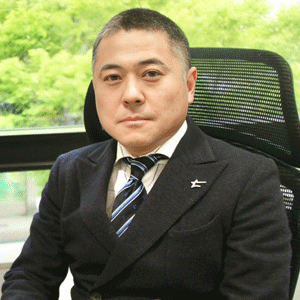
By 2028, the market for medical devices, particularly in the Asia Pacific region, is projected to reach $3,718.71 million, advancing at a CAGR of 7.1 percent over the projected time frame of 2021 to 2028. The region’s aging population size, a surge in chronic conditions, technology advancements, and the widespread usage of healthcare coverage all contribute to the market’s projected future growth. Self-reported hearing impairment affects 10 percent of the Japanese population, only 15 percent of whom are hearing aid users, according to the country’s hearing aid industry.
The percentage of people who use these devices is still low in comparison with other industrialized nations, and for the foreseeable future, the growth of the market for these products is predicted to be around 4–6 percent CAGR. One of the top six brands for production of hearing aids, Starkey Japan, headquartered in the United States, is a pioneer and a market leader for custom made hearing aids across the world. By virtue of being headquartered in the US, the company is still to develop a strong presence in Japan, and is striving to achieve top status in that region as well.
Designing Smart Solutions
Patients suffering from hearing loss are often afraid of wearing hearing devices due to presumptions and stigma since hearing impairment is a hidden impairment. Starkey Japan is working hard to overcome these obstacles by continuing to educate the public so that using hearing aids becomes the norm, just as wearing glasses becomes the usual as one’s vision deteriorates. The brand aims to break stereotypes and give people the confidence to do what they need to do to live full lives without worry of being judged or giving up one of the five senses.
The company has created several significant and cutting-edge items that make up its flagship offerings while keeping this fundamental goal at the forefront of all it does. Evolv AI, a sensor and AI-powered hearing aid with the ability to change 55 million times per hour to the sound environment in order to provide a more comfortable listening experience, is one of the brand’s core products.
The distinguishing feature of this product is the sensor that allows users to tap on the hearing aid or use a smartphone to determine the best adjustment for the wearer. This feature is called ‘Edge mode’ which is based on edge computing technologies. This integrated sensor is found in most of Evolv AI series. The inclusion of the translation feature, along with the enhanced audibility, and the use of sensors and AI are transforming the hearing aid into a multipurpose medical device.
With the ability to continuously gather physical parameters, keep tabs on physical activity, and gauge social participation, it can also detect falls and send alerts to specific contacts automatically. This is a crucial feature as roughly 40 percent of adults over 65 years of age are under risks which can cause serious disability. In creating such devices, there is always a need to ensure high quality of every product without compromise of any kind.
“We control quality by setting KPIs for quality standards. We conduct pre-shipment inspections, improve process management, and listen to feedback from the market, either from sales representatives or myself, or directly from customers. What we can do in Japan, we do in Japan, and through regular global quality improvement meetings, we are working on improvements. In this way, we are not doing anything unique, but are simply implementing what is commonplace, and if I had to say more, I would say that we are emphasizing speed”, shares Keiji Nishimura, MD.
Starkey Japan is working hard to overcome these obstacles by continuing to educate the public so that using hearing aids becomes the norm
The Path Ahead
Starkey was formed in the United States in 1967 by Bill Austin, while its Japanese subsidiary opened its doors in 1991. Although the organization has earned the title of pioneer in tailor-made hearing devices, it was not always smooth sailing, as there were periods when the company’s efficiency was lackluster due to the simple fact that the company’s products failed to meet the Japanese market requirements to a considerable extent. However, prior to his joining in 2019, Keiji made a commitment to double the company’s sales within five years, and owing to a fresh perspective, extensive experience, and client-centric approach, this goal was achieved in merely three years by the end of 2022.
“We don’t hear with our ears, but with our brain. At our U.S. headquarters, we are developing the next generation of products, collaborating with Stanford University focusing on a New Computational Model of the Auditory System. Starkey will continue to deliver products and services that lead the way in health and wellness as a hearing healthcare company”, lastly adds Keiji.
Starkey Japan’s vision for the upcoming years is to develop ‘Transformational Hearing Aids into Multifunctional Health & Communication Devices’ that not only enhance hearing but also include personal assistant and health and wellness features so that people want to wear hearing aids rather than feel forced to.
Keiji Nishimura, Managing Director
An experienced leader and a strong business development professional, he has a demonstrated history of working in the medical device industry, and is skilled in Marketing Management, Sales, Medical Devices, Business Development, and Sales Operations.
We use cookies to ensure you get the best experience on our website. Read more...